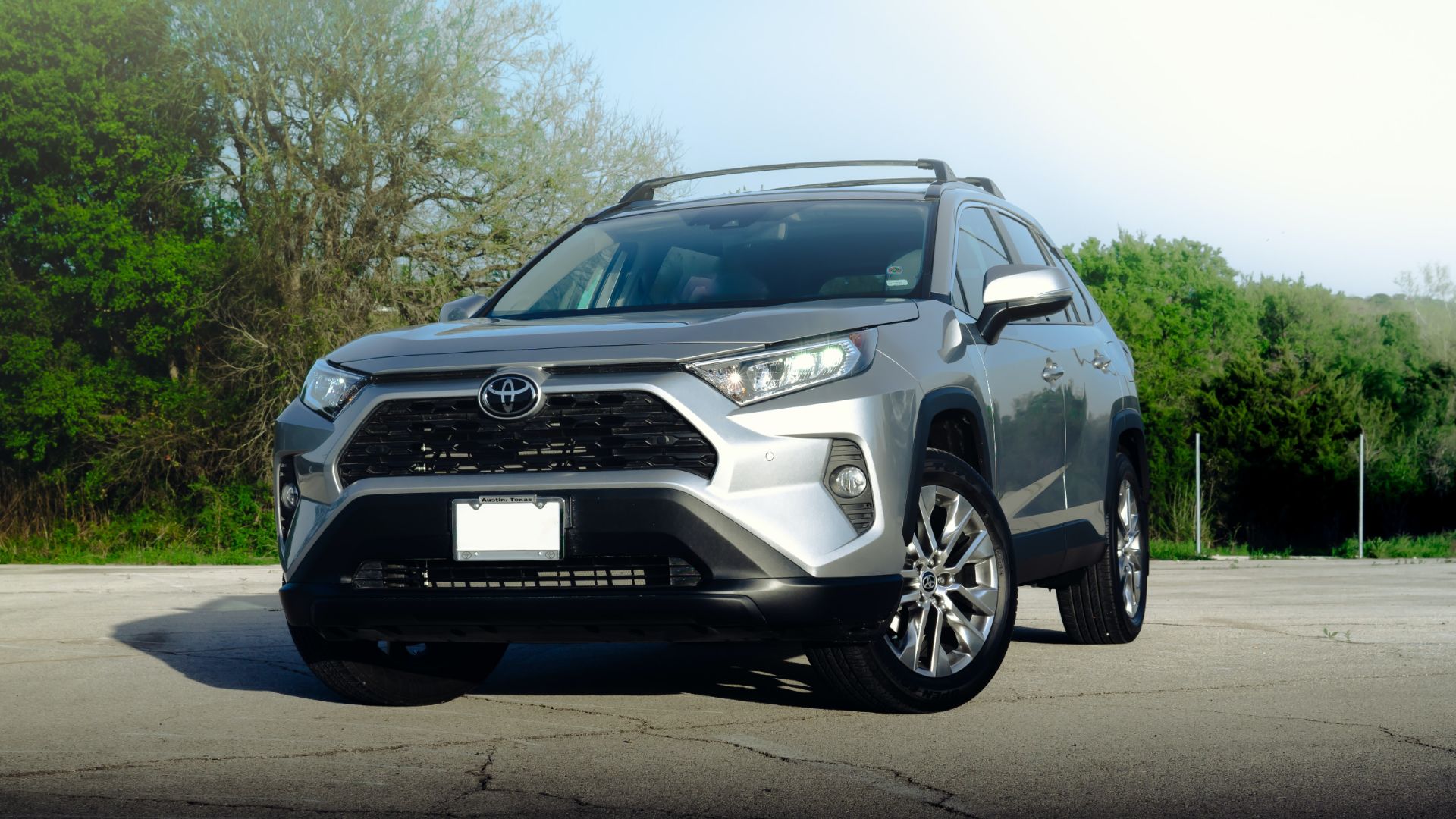The most common Toyota Rav4 problems include transmission issues and excessive oil consumption. Many Rav4 owners have reported problems with their transmissions, such as rough shifting and slipping gears, while others have experienced high oil consumption, requiring frequent top-ups.
These issues can be frustrating and costly to repair, so it’s important for potential buyers to be aware of them before making a purchase. We will discuss these common problems in more detail and provide some tips on how to prevent or address them.
With the right knowledge and maintenance, you can enjoy a trouble-free ownership experience with your Toyota Rav4.

Credit: www.copilotsearch.com
Transmission Issues
One of the most common issues faced by Toyota RAV4 owners revolves around the transmission system. The transmission plays a crucial role in ensuring smooth gear transitions, helping to deliver power to the wheels efficiently. Despite its reputation for reliability, the RAV4 is not immune to transmission problems. In this blog post, we will discuss two major transmission issues commonly experienced by RAV4 owners, including slipping gears and harsh shifting.
Slipping Gears
One of the most concerning transmission issues in the Toyota RAV4 is slipping gears. This problem occurs when the transmission fails to stay engaged in the current gear, resulting in a sudden loss of power. If you notice that your RAV4’s engine revs up without a corresponding increase in speed, it may indicate a slipping gear problem.
There are several potential causes for gear slippage, including low transmission fluid levels, worn-out clutch plates, or a malfunctioning solenoid. Neglecting this issue could lead to further damage to your transmission, resulting in costly repairs. Therefore, it is crucial to address any gear slipping issues promptly.
Harsh Shifting
Another common transmission problem faced by RAV4 owners is harsh shifting. This issue manifests as an abrupt, jerky movement when transitioning between gears. Not only does it create a jarring driving experience, but it can also indicate underlying transmission problems.
Several factors can contribute to harsh shifting, including low transmission fluid, a faulty shift solenoid, or worn-out clutch components. If you notice a sudden jolt or a delay in gear engagement when accelerating or decelerating, it may be a sign of a harsh shifting issue. Ignoring this problem can lead to more severe transmission issues and potentially cause damage to other vehicle components, making it critical to address it as soon as possible.
If you are experiencing slipping gears or harsh shifting problems with your Toyota RAV4, it is recommended to seek professional assistance from a qualified mechanic. They can diagnose the root cause of the issue and provide an effective solution, ensuring your RAV4’s transmission operates smoothly and reliably.

Credit: gtautomotive.com
Engine Problems
When it comes to the Toyota RAV4, some common engine problems have been reported. It’s important to be aware of these issues so that you can take the necessary steps to address and prevent them. In this section, we will discuss two common engine problems: oil leaks and excessive oil consumption.
Oil Leaks
One of the engine problems that Toyota RAV4 owners may experience is oil leaks. These leaks can occur for a variety of reasons, such as a worn-out gasket or a damaged oil seal. When an oil leak happens, it can lead to a variety of issues, including reduced engine performance and potential damage to other components.
To identify an oil leak in your Toyota RAV4, you may notice a puddle of oil underneath your vehicle or a burning smell. If you suspect an oil leak, it’s important to address it as soon as possible to prevent further complications. Consulting a professional mechanic will help you diagnose the exact source of the leak and determine the best course of action to fix it.
Excessive Oil Consumption
Another common engine problem that some Toyota RAV4 owners have reported is excessive oil consumption. This issue can be quite concerning as it can lead to engine damage if not addressed promptly. Excessive oil consumption occurs when the engine burns more oil than usual, resulting in the need for frequent oil top-ups.
If you notice that your Toyota RAV4 requires oil top-ups more frequently than usual, it’s essential to investigate the cause of the excessive oil consumption. Potential causes may include worn piston rings, valve seal leakage, or a malfunctioning PCV (positive crankcase ventilation) system. Consulting a professional mechanic and getting a thorough inspection can help identify the root cause of the problem.
Preventing excessive oil consumption is important to maintain the overall health of your Toyota RAV4’s engine. Regularly checking your oil levels, following the manufacturer’s recommended service intervals, and addressing any oil leaks promptly can help mitigate this problem.
Suspension And Steering Concerns
Suspension and steering concerns are among the most common problems reported by Toyota Rav4 owners. These issues can lead to a shaky and unstable driving experience, making it crucial to address them promptly to ensure safe and smooth handling on the road.
Uneven Tire Wear
Your Toyota RAV4’s suspension and steering are critical components that ensure a smooth and controlled ride. However, they are not without their fair share of problems. One common issue that many RAV4 owners encounter is uneven tire wear. This occurs when the tires wear out unevenly, leading to a variety of problems such as decreased traction, poor handling, and increased risk of blowouts.
Uneven tire wear can be caused by several factors, including misalignment, worn suspension components, or improper tire inflation. When your RAV4’s suspension is not properly aligned, it can put uneven pressure on the tires, causing them to wear unevenly. Similarly, worn suspension components such as ball joints or bushings can lead to improper tire contact with the road surface, resulting in uneven wear.
To prevent uneven tire wear in your Toyota RAV4, it is important to:
- Regularly check your tire pressure and ensure that it is within the manufacturer’s recommended range. Underinflated or overinflated tires can contribute to uneven wear.
- Have your suspension system inspected and aligned by a qualified technician regularly. Regular maintenance can help identify and address any potential issues before they lead to uneven tire wear.
- Replace any worn suspension components as soon as they are identified. This will ensure that your RAV4’s suspension is working properly and not causing unnecessary wear on your tires.
By taking these proactive measures, you can minimize the risk of uneven tire wear and keep your Toyota RAV4 performing at its best.
Loose Steering
Another common suspension and steering concern in the Toyota RAV4 is loose steering. Loose steering refers to a lack of responsiveness or control in the steering wheel, which can make it difficult to steer the vehicle accurately and safely. This issue can be caused by various factors, including worn steering components, improper wheel alignment, or a malfunctioning power steering system.
When the steering components of your RAV4 are worn, they may create excessive play or looseness in the steering system. This can result in a delayed response from the wheels when you turn the steering wheel, making it difficult to maintain control of the vehicle.
If the wheel alignment of your RAV4 is off, it can also contribute to loose steering. Improper alignment can cause the tires to pull or drift in one direction, requiring constant correction from the driver and leading to a loose feeling in the steering wheel.
To address loose steering in your Toyota RAV4, consider the following steps:
- Regularly inspect and replace any worn steering components, such as tie rods or steering rack bushings. This will help restore the responsiveness and control of your steering system.
- Ensure that your RAV4’s wheel alignment is checked and adjusted as necessary. Proper alignment will help maintain a stable and precise steering feel.
- If you suspect a problem with the power steering system, have it inspected by a qualified technician. A malfunctioning power steering system can also contribute to loose steering.
Taking these measures will help address loose steering and ensure a safer and more enjoyable driving experience in your Toyota RAV4.
Electrical System Troubles
The electrical system in a Toyota RAV4 is responsible for powering various components and ensuring they function correctly. However, some owners have reported experiencing electrical issues that can be disruptive and frustrating. Let’s take a look at two common electrical system problems: faulty power windows and malfunctioning dashboard lights.
Faulty Power Windows
In some Toyota RAV4 models, owners have encountered problems with their power windows. The windows may become stuck or fail to move up or down smoothly. This can be incredibly inconvenient, especially during inclement weather or when you need to quickly lower or raise the windows.
One possible cause of this issue is a faulty window regulator. The window regulator is responsible for controlling the movement of the window glass. Over time, the regulator can wear out or become damaged, leading to difficulties with the power windows.
If you’re experiencing faulty power windows in your Toyota RAV4, it’s recommended to have a professional technician inspect and potentially replace the window regulator. Regular maintenance and lubrication of the window tracks can also help prevent future issues.
Malfunctioning Dashboard Lights
Another common electrical problem in Toyota RAV4 models involves malfunctioning dashboard lights. Owners have reported issues with the illumination of dashboard gauges and warning lights. This can make it difficult to monitor important information while driving.
One possible cause of this problem is a faulty dashboard light bulb. Over time, the bulb can burn out or become loose, resulting in dim or non-functional dashboard lights. In some cases, the issue may also be related to a faulty dimmer switch or a blown fuse.
To address this issue, it’s advisable to consult a professional technician who can diagnose the exact cause of the malfunctioning dashboard lights. They can then replace the faulty bulb, repair the dimmer switch if necessary, or replace any blown fuses..

Credit: rerev.com
Frequently Asked Questions Toyota Rav4 Problems
What Is The Most Common Problem With Toyota Rav4?
The most common problem with Toyota RAV4 is excessive oil consumption, leading to engine issues.
What Year Did The Toyota Rav4 Have Transmission Problems?
The Toyota RAV4 experienced transmission problems in the years 2001 to 2003.
Is The Toyota Rav4 A Reliable Car?
Yes, the Toyota RAV4 is a reliable car. It has a strong reputation for its durability and dependability, making it a trusted choice among car owners. With its quality engineering and solid performance, the RAV4 offers reliability you can count on.
What Are The Disadvantages Of The Toyota Rav4?
Some potential disadvantages of the Toyota RAV4 may include a firm ride, lackluster acceleration, and limited cargo space compared to some of its competitors. Additionally, the infotainment system might be considered as less intuitive and lacking some advanced features. Keep in mind that these downsides are subjective and can vary depending on individual preferences and needs.
What Are The Most Common Toyota Rav4 Problems?
The most common problems with Toyota Rav4 include transmission issues, excessive oil consumption, and interior rattles.
Final Thoughts
The Toyota Rav4, like any vehicle, is not without its fair share of problems. From transmission issues to electrical problems, these are common concerns that Rav4 owners may encounter. It is important to be aware of these problems and take appropriate measures to prevent or address them.
By staying proactive and regularly maintaining your Rav4, you can ensure a smoother and more reliable driving experience. Remember, knowledge is power when it comes to preserving the longevity of your Toyota Rav4.

